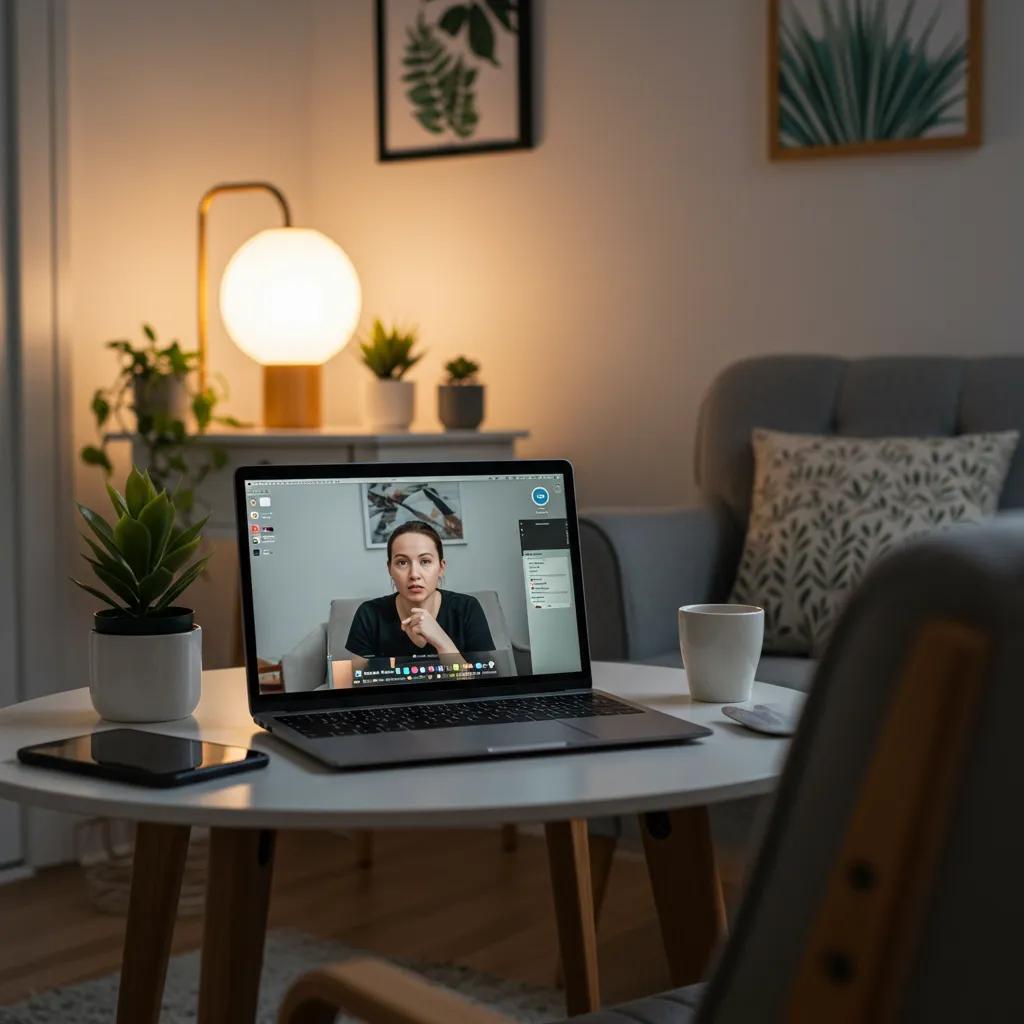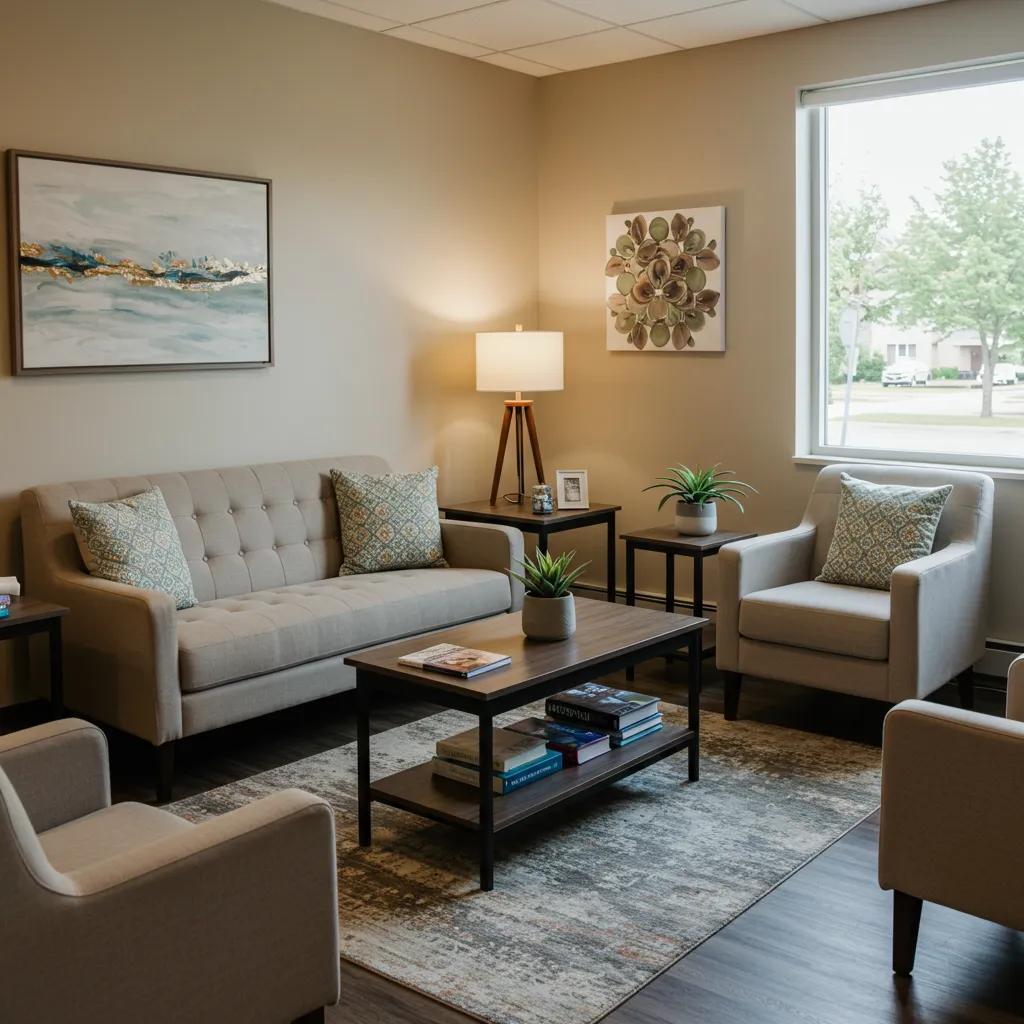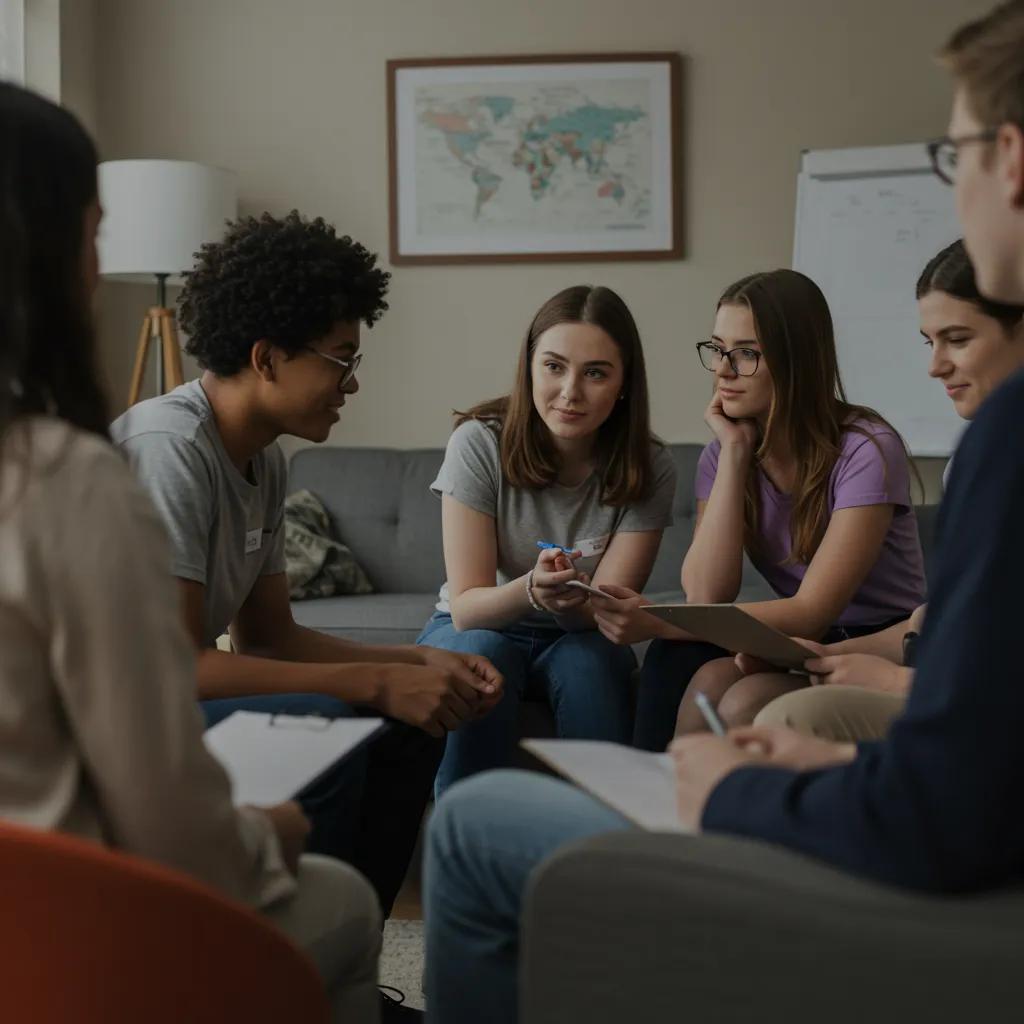Social Media Impact on Body Image
The rise of social media has brought about significant changes in how individuals perceive their bodies and the development of eating disorders. The influence of social media on body image can have both negative and positive effects. In this section, we will explore the negative effects of social media on body image and how it contributes to the development of eating disorders.
Negative Effects of Social Media
Research has shown a clear link between social media use and signs of negative body image, including body dissatisfaction and eating disorder symptoms. A survey found that individuals who frequently use social media platforms, especially image-centric ones like Instagram, are more likely to experience body dissatisfaction and engage in disordered eating behaviors. The constant exposure to carefully curated images of idealized bodies on social media can create a toxic culture of comparison and competition, leading individuals to compare their own bodies to unrealistic beauty standards [2].
Furthermore, social media platforms can be a breeding ground for cyberbullying, with offensive comments and false rumors targeting individuals based on their body size, shape, or appearance. Cyberbullying related to body image can significantly impact self-esteem and contribute to negative body image and mental health issues like depression and anxiety.
Influence on Eating Disorders
Studies have identified social media as a “plausible risk factor for the development of eating disorders.” The constant exposure to images of seemingly perfect bodies can contribute to the internalization of thin-ideal standards, leading to body dissatisfaction and a distorted perception of one’s own body. These factors, combined with the pressure to conform to societal beauty standards, can increase the likelihood of developing eating disorders [1].
Social media can also worsen body-image disorders such as body dysmorphic disorder (BDD). Individuals with eating or body-image disorders may already struggle with distorted perceptions of their appearance, and social media can exacerbate these symptoms. The constant exposure to edited and filtered images can intensify preoccupations with nonexistent or slight defects in physical appearance, which are characteristic of BDD.
It is important to recognize the negative impact that social media can have on body image and the development of eating disorders. By understanding these influences, individuals can be more mindful of their social media use and take steps to protect their mental well-being. In the following sections, we will explore research findings on social media and delve into the positive influence of social media in promoting body positivity and healthy lifestyles.
Research Findings on Social Media
As social media continues to play a prominent role in our daily lives, research has shed light on its impact on body dissatisfaction and the promotion of disordered eating.
Link to Body Dissatisfaction
Several studies have found a link between social media use and signs of negative body image, including body dissatisfaction and eating disorder symptoms. A survey conducted by Healthline revealed that social media usage, particularly on image-centric platforms like Instagram, was associated with increased body dissatisfaction, especially among men. The constant exposure to carefully curated images and the comparison of one’s own appearance to others on social media can contribute to feelings of inadequacy and dissatisfaction with one’s body. This dissatisfaction can further escalate into mental health issues such as depression and anxiety, as highlighted by Psych Central.
A 2021 study also found that individuals who frequently engaged in comparing their looks to others on social media reported higher levels of overall body dissatisfaction Healthline. This suggests that the habit of comparing oneself to unrealistic beauty standards portrayed on social media can have detrimental effects on body image.
Promotion of Disordered Eating
Social media platforms have been identified as potential risk factors for the development of eating disorders. According to a paper published in 2023 Healthline, social media’s influence on body image and the constant exposure to idealized body types can contribute to the development of disordered eating patterns. The pressure to conform to these unrealistic beauty standards portrayed on social media can lead individuals to engage in extreme dieting, excessive exercise, or other harmful behaviors to attain the desired appearance.
Furthermore, a study conducted in 2022 on TikTok and diet culture found that popular content on the platform often promotes disordered eating habits and presents thinner body types as more ideal Healthline. This can prey on viewers’ insecurities and contribute to the normalization of unhealthy eating behaviors.
These research findings emphasize the need for individuals to be critically aware of the impact of social media on body image and the potential risks associated with it. Developing a healthy relationship with social media and fostering body positivity are essential steps to counteract the negative effects and promote a healthier mindset.
In the next section, we will explore the connection between social media and eating disorders, focusing on cyberbullying and body image, as well as the association between social media and body dysmorphic disorder.
Social Media and Eating Disorders
The impact of social media on body image and eating disorders is significant, with various negative effects and connections to specific disorders. Two notable aspects of this relationship are cyberbullying and its impact on body image, as well as the connection between social media and body dysmorphic disorder (BDD).
Cyberbullying and Body Image
Social media platforms can sometimes become breeding grounds for cyberbullying, which can have detrimental effects on body image and self-esteem. Offensive name-calling, spreading false rumors, and body shaming related to size, shape, or appearance can significantly impact individuals’ perceptions of their own bodies. According to research, approximately 59% of U.S. teens have personally experienced cyberbullying. This kind of online harassment contributes to body dissatisfaction and can exacerbate the development of eating disorders.
Connection to Body Dysmorphic Disorder
Social media can worsen body-image disorders such as body dysmorphic disorder (BDD), which affects about one in 50 people in the United States. BDD is characterized by a preoccupation with nonexistent or slight defects in physical appearance. The visual nature of social media platforms can amplify the distress experienced by individuals with BDD, as they compare themselves to others and become fixated on perceived flaws. The constant exposure to edited and filtered images can intensify their dissatisfaction with their own appearance, leading to heightened distress and mental health issues [2].
Understanding the negative impact of social media on body image and the connection to eating disorders is crucial in addressing these issues. However, it’s essential to acknowledge that social media’s influence is not solely negative. In the following section, we will explore the positive influence of social media, including the promotion of body-positive content and healthy lifestyles.
Positive Influence of Social Media
While social media has been associated with negative impacts on body image and eating disorders, it also has the potential to exert a positive influence. In this section, we will explore the body-positive content effects and the promotion of healthy lifestyles facilitated by social media platforms.
Body-Positive Content Effects
Body-positive social media content can play a significant role in improving body satisfaction. A 2021 study involving 233 female-identifying participants found that exposure to body-positive social media content led to enhancements in body satisfaction, particularly when accompanied by captions reinforcing body-positive ideals. These positive messages, along with diverse representations of body types and appearances, can contribute to a more inclusive and accepting environment for individuals of all body shapes and sizes.
Social media platforms provide a space for individuals to share their experiences, challenges, and triumphs, fostering a sense of community and support. People can find solace and inspiration by connecting with others who have similar body image struggles. Through hashtags, campaigns, and online communities, individuals can discover a sense of belonging and empowerment, promoting self-acceptance and body positivity.
Efforts are being made to promote diversity of representation in body image through social media. Accounts focusing on body positivity often depict a broad range of body types and appearances alongside messages of body appreciation and acceptance. This inclusivity challenges traditional beauty standards and encourages individuals to embrace their unique features, fostering a more positive body image.
Promotion of Healthy Lifestyles
Social media platforms can provide inspiration for leading a healthy and active lifestyle. Numerous accounts promote healthy living, exercise, and nutritious food choices, encouraging individuals to take care of their bodies. By sharing workout routines, meal ideas, and wellness tips, these accounts aim to motivate and educate their followers about making positive choices for their physical and mental well-being.
Additionally, social media enables individuals to discover a variety of fitness communities and wellness influencers who offer support, guidance, and encouragement. These platforms can be a valuable resource for people seeking information on exercise programs, dietary advice, and mindfulness practices. By engaging with positive and educational content, individuals can cultivate healthy habits and develop a more balanced approach to their well-being.
In conclusion, while social media has been criticized for its negative impact on body image and eating disorders, it also presents opportunities for positive change. Body-positive content on social media can enhance body satisfaction and promote acceptance of diverse body types. Furthermore, social media platforms can inspire individuals to adopt healthy lifestyles and engage in self-care practices. By harnessing the potential of social media for positive influence, we can work towards creating a more inclusive and supportive environment for body image and mental well-being.
Social Media Literacy Programs
In response to the negative impact of social media on body image and eating disorders, social media literacy programs have emerged as a valuable tool in reducing the risks associated with these conditions. These programs aim to educate individuals about the advantages and disadvantages of social media, empowering them to make informed choices regarding their online engagement.
Reducing Eating Disorder Risks
Social media literacy programs have been shown to effectively reduce the risk of eating disorders among adolescents. Programs such as Media Smart and Media Smart Online have demonstrated beneficial outcomes in this regard. By providing education about the potential dangers of social media and promoting critical thinking skills, these programs equip individuals with the tools necessary to navigate social media platforms in a healthier and more positive manner.
Benefits of Education
Education plays a crucial role in mitigating the harmful effects of social media on body image and eating disorders. By increasing awareness and understanding of the influence of social media, individuals are better equipped to recognize and challenge the unrealistic beauty standards and harmful content that can be prevalent on these platforms.
Studies have shown that social media addiction has a weak positive relationship with eating disorders, particularly bulimia and food preoccupation [5]. By providing education about the addictive nature of social media and its potential impact on mental health, individuals can develop a greater sense of self-awareness and take steps to ensure a healthier relationship with these platforms.
Furthermore, social media literacy programs raise awareness about the visual material promoting the thin ideal that is often found on platforms like Instagram, Snapchat, Pinterest, and Tumblr. Exposure to these influential visuals can contribute to the development of eating concerns [6]. By educating individuals about the manipulative nature of these images and promoting body positivity, these programs empower individuals to resist the pressures and unrealistic standards often perpetuated on social media.
In addition to reducing the risk of eating disorders, social media literacy programs also address other concerns, such as body dysmorphic disorder (BDD). BDD is a condition characterized by preoccupation with nonexistent or slight defects in physical appearance and can be excessively worsened by social media. By providing education and resources about this disorder, these programs contribute to a better understanding of BDD and encourage individuals to seek appropriate support and treatment.
Overall, social media literacy programs offer valuable education and guidance, enabling individuals to navigate social media in a way that promotes a healthier body image and reduces the risks of developing eating disorders. By fostering critical thinking skills and promoting body positivity, these programs empower individuals to engage with social media in a more conscious and self-affirming manner.
Get your question answered now.
Recommendations for Body Image
When it comes to improving body image, there are various approaches and interventions that can be beneficial. It is important to address the negative impacts of social media and promote a healthy relationship with one’s body. Additionally, therapy can play a crucial role in supporting individuals on their journey towards a positive body image.
Approaches to Improve Body Image
To improve body image, individuals can consider implementing the following approaches:
Practice self-acceptance: Cultivating self-acceptance involves embracing and appreciating one’s unique body, including its shape, size, and imperfections. This approach focuses on valuing oneself beyond physical appearance and recognizing the worth of all body types.
Engage in positive self-talk: Being mindful of the language used when speaking to oneself is crucial. Encouraging positive self-talk and challenging negative thoughts or beliefs about one’s body can help shift the focus to self-compassion and appreciation.
Surround yourself with positive influences: Actively curating social media feeds and other sources of influence to include body-positive content can have a significant impact. Following diverse accounts that promote body acceptance, inclusivity, and realistic representations of beauty can help reshape perceptions and foster a more positive body image.
Focus on overall health: Shifting the emphasis from appearance to overall health and well-being can be beneficial. Prioritizing a balanced diet, regular physical activity, and self-care practices promotes a holistic approach to wellness, enhancing self-esteem and body image.
Role of Therapy in Body Image
Therapy can be an essential tool in supporting individuals struggling with body image issues. Different therapeutic approaches have shown promising results in improving body image and facilitating long-term change. Some of these approaches include:
Cognitive-Behavioral Therapy (CBT): CBT aims to identify and challenge negative thoughts and beliefs related to body image. By addressing distorted thinking patterns and implementing evidence-based strategies, individuals can develop healthier perceptions of themselves and their bodies.
Acceptance and Commitment Therapy (ACT): ACT focuses on mindfulness and acceptance of one’s thoughts and feelings without judgment. Through ACT, individuals can develop psychological flexibility and learn to value themselves based on personal values and goals, rather than external appearance.
Acceptance and Commitment Therapy (ACT): ACT focuses on mindfulness and acceptance of one’s thoughts and feelings without judgment. Through ACT, individuals can develop psychological flexibility and learn to value themselves based on personal values and goals, rather than external appearance.
Therapy can provide a safe and supportive space for individuals to explore their body image concerns, develop coping mechanisms, and work towards a healthier relationship with their bodies. Seeking professional help from a qualified therapist who specializes in body image issues can be a valuable step in the journey towards improved self-esteem and body acceptance.
In addition to individual therapy, group therapy or support groups that focus on body image and self-acceptance can provide a sense of community and solidarity. These spaces allow individuals to share their experiences, receive support, and learn from others who are on a similar path.
By implementing these approaches and seeking professional support, individuals can foster a positive body image and cultivate a healthier relationship with their bodies, ultimately leading to improved overall well-being.
Resources
- [1]: https://www.healthline.com/health/social-media-and-body-image
- [2]: https://psychcentral.com/health/how-the-media-affects-body-image
- [3]: https://www.mentalhealth.org.uk/our-work/research/body-image-how-we-think-and-feel-about-our-bodies
- [4]: https://www.news-medical.net/health/Eating-Disorders-and-Social-Media.aspx
- [5]: https://www.ncbi.nlm.nih.gov/pmc/articles
- [6]: https://www.ncbi.nlm.nih.gov/pmc/articles
Did You Know? According to WHO, one out of every seven teens is struggling with some sort of mental illness.










